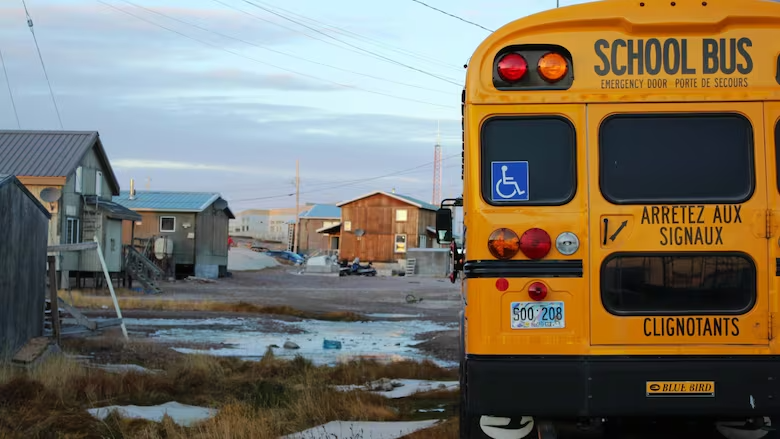Bilingual Inuktitut education not being properly implemented in Nunavut, report finds

The report found a lack of sufficient resources and not enough appropriate teaching spaces
A new report has found that bilingual Inuktitut education is not being properly implemented in Nunavut schools.
The report is called From Promise to Practice: Inuit Voices on Bilingual Education and was composed after consultation meetings in 24 Nunavut communities.
It found students are falling behind when the shift from Inuktitut to English is too abrupt, it found there is a shortage of Inuit teachers, and that Inuit teachers who are working in Nunavut should get more mentorship, training and classroom support.
The report was written by the Coalition of Nunavut District Education Authorities, a non-governmental advocacy organization that supports parents with children in Nunavut’s education system.
Carla Oyukuluk is the coalition’s liaison officer, she spoke with CBC News in Inuktitut. She said Inuktitut is very strong from Kindergarten to Grade 3 or 4, but that after that the students are mostly being taught in English — and this is leading to Inuktitut language loss.
Maya Jelali is the coalition’s director of research, policy and evaluation, and led the report writing and data analysis.
“There was insufficient support for Inuit languages,” Jelali said.
Lack of certified bilingual Inuit educators
The quality and frequency of Inuktitut instruction was limited by a lack of certified bilingual Inuit educators and appropriate curriculum materials, the report found.
“An example of that was that students reported being given elementary level worksheets in Inuktitut well into their junior and senior high school. That suggested to us an urgent need to update the resources,” Jelali said.
Nunavut offers three bilingual models: the Qulliq Model, for Inuit language-dominant communities; the Immersion Model, for revitalizing Inuit languages in predominantly English-speaking homes; and the Dual Model, which separates students into Inuit or English first-language streams. The report found these models cannot be evaluated because they have not been fully implemented.
The report found all three models lack sufficient resources to implement bilingual education effectively. The report doesn’t propose new models, but calls for action to properly implement the existing ones.
According to the report, the quality and frequency of Inuktitut instruction was limited by a lack of Inuit educators and appropriate curriculum materials.
The report noted concerns that there are not enough appropriate spaces for teaching and learning Inuktitut.
“Participants also identified broader challenges — including shortages of qualified teachers, a lack of teaching materials, limited community engagement, and gaps in leadership and accountability,” the report found.
The report also included recommendations including “investments in teacher training, curriculum and materials development, and stronger community partnerships.”
CBC News reached out to the Nunavut department of Education about the report, but didn’t receive a response by deadline.
With files from Mah Noor Mubarik
Related stories from around the North:
Canada: Mark Indigenous languages decade by making Inuktitut official in Canada: Inuit UN rep, The Canadian Press
Finland: Everyone encouraged to boost Sami language visibility in Finland, Norway and Sweden this week, Eye on the Arctic
Norway: Indigenous and minority language names for Norway now have official status, The Independent Barents Observer
Russia: German project to house everything published in Siberian and Arctic languages to seek new funding, Eye on the Arctic
Sweden: Can cross-border cooperation help decolonize Sami-language education, Eye on the Arctic
United States: Inuit leaders applaud UN move to designate International Decade of Indigenous Languages, Eye on the Arctic



